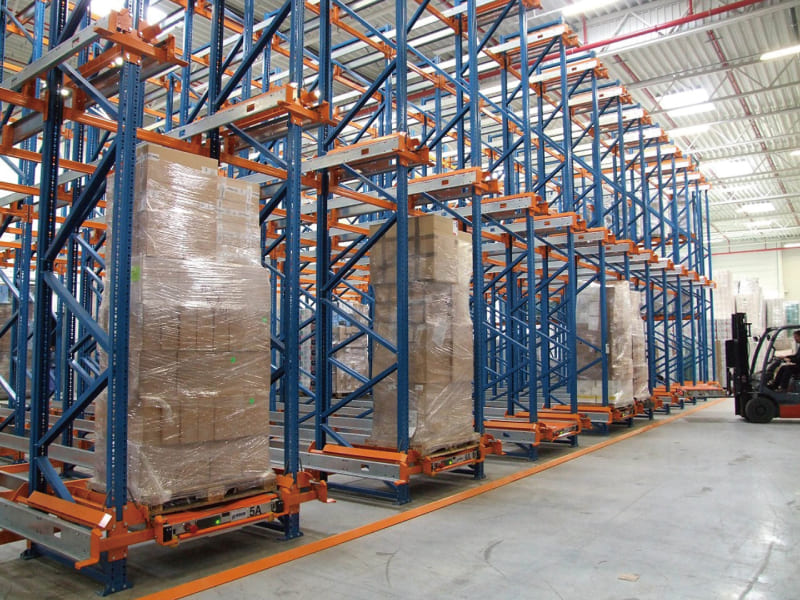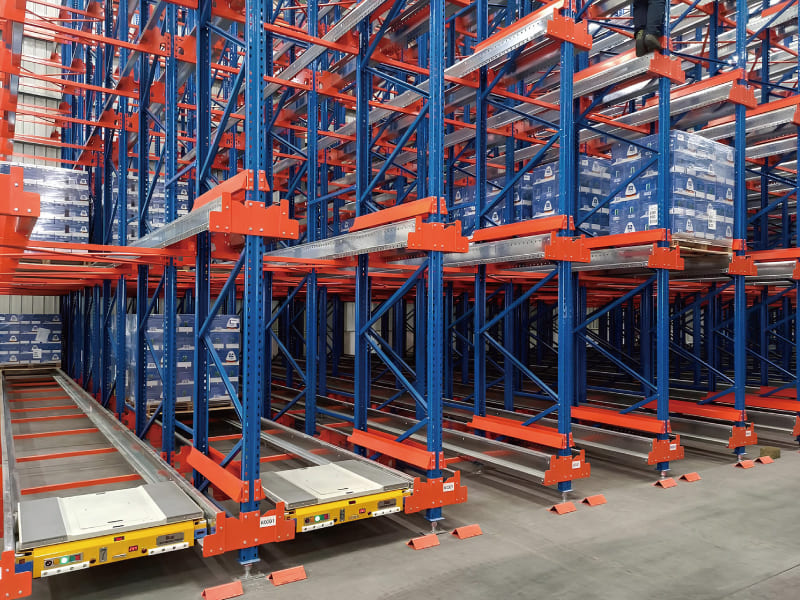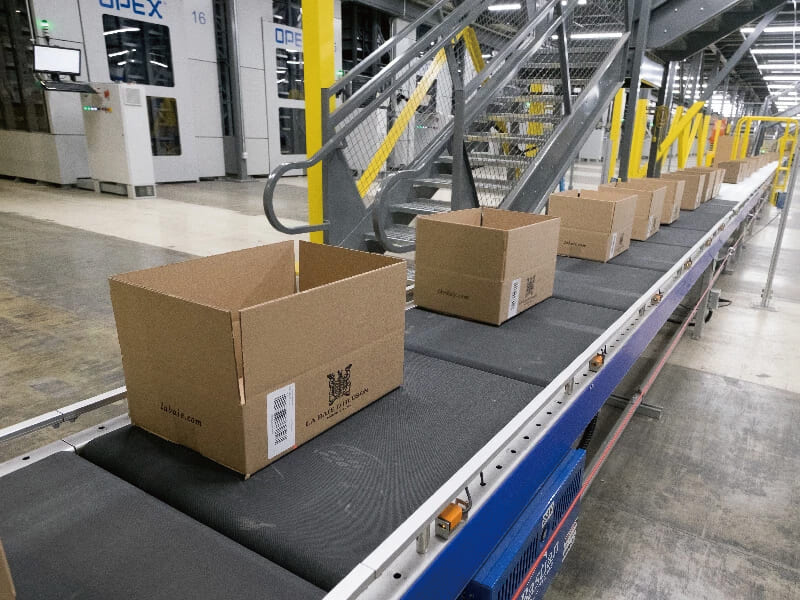Call Us :8615298359310
Call Us :8615298359310
A warehouse shuttle system is an automated, mobile cart designed to transport goods within a warehouse, particularly within deep racking systems. These shuttles move along rails integrated into the racking structure, efficiently handling the retrieval and storage of items such as pallets, trays, or totes.
Their mobility allows them to optimize the utilization rate of warehouse space by enabling high-density storage, maximizing vertical space, and reducing the need for wide aisles.

These systems excel in operations that utilize a goods-to-person model, where items are brought to workers for processing or order fulfillment. This means that warehouse shuttle systems are particularly effective in settings with lower SKU counts but high throughput, where fast loading and unloading of pallets is necessary. They contribute to smoother workflows, reduced manual labor, and employee safety.
Warehouse shuttle systems typically operate in one of two configurations:
Once the pallets are placed on one end of the racking system, operators use remote control or Wi-Fi signals to direct the shuttle. The shuttle retrieves or deposits pallets by moving along the rails to the correct storage position. Vertical transporters or warehouse lifts are often installed at the end of the aisle, enabling the shuttle to move between different racking levels for optimal space utilization.
Key Features of Warehouse Shuttle Systems

Benefits of Warehouse Shuttle Systems
Warehouse shuttle systems bring numerous advantages that cater to the needs of modern warehouse management:
Warehouse shuttle systems significantly enhance storage efficiency by enabling high-density racking. Warehouses can reduce the space between aisles and increase the height of their racking structures, making them useful in facilities where space is limited or expensive.
For warehouses handling high volumes of similar SKUs (stock-keeping units), these systems allow for rapid retrieval and placement of pallets. They streamline order fulfillment processes by minimizing delays in picking and storing goods. This feature makes shuttle systems a preferred choice for industries such as food and beverage, cold storage, and meat processing, where throughput is critical.
The automation provided by warehouse shuttle systems reduces the need for manual intervention in handling pallets. Fewer operators are required to manage the system, leading to reduced labor costs. Additionally, automation minimizes the risks associated with manual handling, enhancing workplace safety.
The design of warehouse shuttle systems minimizes the need for forklifts to enter racking areas, reducing congestion and the likelihood of accidents. Moreover, by automating pallet handling, the systems prevent damage to the goods and the racking structures, leading to long-term savings and better asset management.
Warehouse shuttle systems enable faster loading and unloading of pallets. By reducing the time spent moving goods in and out of storage, warehouses can process orders more quickly, leading to better customer satisfaction and more efficient flow.
Despite their many benefits, warehouse shuttle systems come with certain limitations that must be considered before implementation:
One of the primary disadvantages is the significant upfront cost. Warehouse shuttle systems require a substantial capital investment in warehouse automation equipment and infrastructure. Companies must weigh the potential return on investment (ROI) before committing to such a system.
Due to their complex mechanics and automation, these systems have high maintenance requirements. Regular servicing and occasional downtime are necessary to ensure optimal performance, which can disrupt warehouse operations.
Warehouse shuttle systems are best suited for facilities with a limited variety of SKUs that need to be stored in bulk. They are not ideal for environments with multi-SKU lanes or operations that require piece-picking. As e-commerce continues to drive demand for highly diverse product ranges, this limitation makes warehouse shuttle systems less suitable for many modern warehouses.
To get the most out of a warehouse shuttle system, it’s essential to assess the specific needs of the warehouse environment:

For facilities that manage diverse SKUs or require more flexibility in picking operations, collaborative mobile robots (cobots) may be a better option. Cobots, such as those used in e-commerce or multi-channel fulfillment centers, are designed to navigate warehouse environments autonomously, picking and transporting goods. These robots are more adaptable to complex picking operations and offer advantages over warehouse shuttle systems, such as:
Warehouse shuttle systems reduce labor costs, and significantly speed up pallet handling processes. However, it may cater to larger volumes of similar SKUs.
If you would like to automate your warehouse operation and get a quote, don't hesitate to contact us now, our team of experts is ready to find the best fit for your warehouse.
Copyright © 2024 Jiangsu VISON Logistics Technology Co., Ltd. All Rights Reserved.  Network Supported
Network Supported
Sitemap | Blog | Xml | Privacy Policy